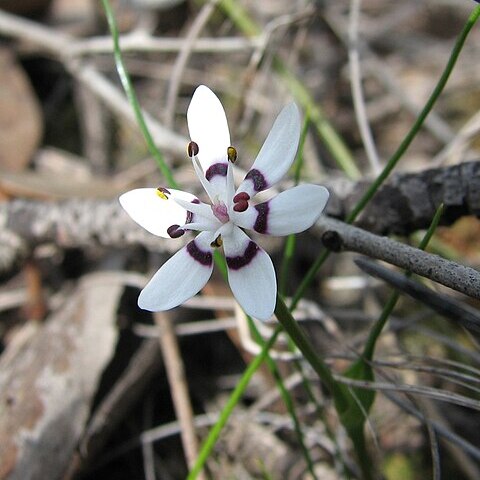Plants relatively small, with a tunicated, bulb-like corm; stem erect, lowermost leaf a membranous, sheathing, tubular cataphyll, not protracted into a leaf-blade, followed by a solitary basal leaf and 1–3 cauline leaves, which are basally sheathing the stem. Leaves linear or linear-filiform, semi-terete, somewhat flattened with a concave or channeled adaxial side, or flattened. Inflorescence a spike, 1-many flowered. Flowers stellate to campanulate. Perianth segments basally united in a short to long tube, spreading; nectary a variously shaped, swollen organ in the lower half of the perianth segments. Stamens inserted at the throat of the perianth tube; filaments filiform; anthers oblong or oblong-ellipsoid, minute, dorsifixed, versatile, dehiscing extrorsely by longitudinal slits. Ovary ellipsoid, oblong to ovoid, sometimes triangular; styles 3, erect, free, short, subulate to falcate; stigma minute, persistent in fruit. Capsule oblong, elliptic-oblong, ovoid or obovoid, sometimes slightly triquetrous, septicidal, coriaceous; seeds subglobose, occasionally compressed or slightly angular, with an appendage or minute beak on one side.
More
Glabrous herbs, dioecious, andromonoecious or flowers all bisexual; rootstock a tunicated corm. Stem or scape unbranched. Leaves basal or cauline, 2 or 3, sheathing at base. Inflorescence a spike or solitary flower; bracts absent. Male and female flowers in dioecious species ±dissimilar; male flowers and inflorescences similar to bisexual ones in andromonoecious species. Tepals usually 6, 6-8 in Wurmbea tenella , usually equal, in 1 whorl, connate below middle, persistent; nectaries 1 or 2 per tepal. Stamens as many as tepals; anthers dorsifixed, rarely almost basifixed, versatile, dehiscing latrorsely by slits. Ovary superior, 3-locular, 4-locular when tepals 7 or 8; styles free or connate below middle; ovules 10-25 per locule; placentation axile. Fruit a capsule, loculicidal or both loculicidal and septicidal. Seeds spherical, ±smooth, brown.

